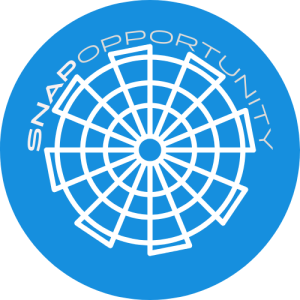‘Has the potential to be enormously helpful’: AI in Idaho schools – KTVB.com
KTVB hosts panel discussion on the use of artificial intelligence in schools.
IDAHO, USA — Artificial Intelligence (AI), is used a lot in people’s everyday lives, whether they realize it or not. From search engines like Google, to the use of algorithms in social media, spam filters and streaming apps, AI is being used in a slew of ways.
It is also likely being used in classrooms across the state. KTVB hosted a panel of education experts from Boise, West Ada and Nampa School Districts, Boise State University and Northwest Nazarene to discuss how, why and if AI should be used in classrooms.
Bethany Schultz, M.Ed, Ed.D, directory=r of Instructional Design and Technology at Northwest Nazarene University; Drew Williams, Blended Learning Specialist at Nampa School District; Will Goodman, Chief Technology Officer at Boise School District; Aimee Larson, Admin of Instructional Technology in West Ada School District and Casey Kennington, Associate Professor of Computer Science at Boise State, told KTVB both teachers and students can use AI as a tool.
Full Interview Transcript:
Rachel Garceau: What is Artificial Intelligence, what is AI?
Will Goodman: When we think AI, we think now… it can talk to us… we can type to it and it can type back, or we can type to it and it can generate an image or a video, or we can do simultaneous translation.
Maggie O’Mara: Let’s talk about the pros and cons. How is AI helpful to teachers?
Drew Williams: I think AI has the potential to be enormously helpful for our teachers, because it can be used as a tool for efficiency or an assistant for teachers. I think it’s key teachers get the support and guidance and training and permission to experiment with these tools. Differentiating materials from curriculum to better meet the needs of the students, to translate materials for multilingual learners, and to take care of some of the documentation that teachers have to do every day.
Will Goodman: In the Boise District over 100 languages are spoken in the district, so finding translators that can do more than just a word for word translation, but AI allows for a thought for thought translation. This is allowing us to more accurately communicate with families and bring them into the community more.
Maggie O’Mara: How many teachers are open to this training and education and how are you training your teachers?
Will Goodman: When AI first came out and CHAT GPT first hit the scene, we had teachers who wanted to ban it. There was worry that students would cheat. We did trainings all over in our 50ish schools where we had teachers try it, by allowing teachers to get in there and try the AI tools, see how helpful they are. That really opened up teachers to seeing the benefits that students can get from it also.
Rachel Garceau: In higher ed, what are you seeing too? As far as the benefits to to AI…
Bethany Schultz: I think in higher ed we still have a lot of faculty that have their heads in the sand. I think professional development is vital in this area, both continuing ed for K-12 teachers but also for higher ed. To spend some time to really explore it, and play with it and understand how it works. Really know what it is capable of so they understand how their students might be tempted to use it and how they might guide them to use it in another way.
Rachel Garceau: What are you hearing in your classrooms, are students talking about it, using it, open to it.
Casey Kennington: We encourage it, but we also want our students to tell us when they are using it.
Aimee Larson: They are not sure what’s allowed in the classroom, that’s where our role is to come in and provide guidelines for teachers.
Will Goodman: In the Boise district we are definitely encouraging students to use it, we see that almost every industry is going to have this embedded in some way or another, so by making sure our students know how to use it ethically, responsibly. They are going to have the best advantages when they go into post secondary and into the workforce.
Drew Williams: We do have students who are using it but it’s imperative that that communication line is open within the classroom. So that we can make sure that however we are learning is really enhancing their learning.
Maggie O’Mara: Let’s talk about tutoring or personalizing something for a specific child, how is that helpful?
Drew Williams: To be able to have your core lesson and then quickly adapt it for different levels even sometimes of the fly…. would be nearly impossible without technology to do that. So I think that’s a huge teaching assistant or buddy for you in the classroom.
Will Goodman: One of my favorite tools that we can use AI for in tutoring…so if a student gets home and they are struggling with a math problem… it doesn’t give them the answer, it teaches them how to get the answers themselves.
Maggie O’Mara: Let’s talk about the cons
Will Goodman: I think one of the biggest cons are deep fakes… the fear that students can use AI to harass or bully another student. Just making sure we are teaching them the ethics of that and how to avoid that.
Casey Kennington: The cons list is long in my view. The overtrust is an issue, people overtrust self driving cars, they aren’t self driving cars, they are driver assist cars… but that’s the thing with technology, it’s read more than I have, it’s seen more texts than I have, it must be smarter than I am. I don’t want us to go that far.
Drew Williams: It’s really important that we help people develop the skills to understand that what the AI is giving might not be accurate and is very prone to perpetuating biases. What they see might not be accurate or be real.
Aimee Larson: The student data privacy piece is really fundamental, helping insure that anything that’s input into these models is protected.
Bethany Schultz: I think the number one thing I hear from faculty and teachers is about plagiarism and making sure the student’s work is actually demonstrating the student’s knowledge. Are we really learning, and are students really learning?
Drew Williams: It’s really easy to catch if a student is using AI in their work but it’s difficult to prove.
Maggie O’Mara: Parents out there? What do they need to know, how do they guide their kids.
Drew Williams: We want to have these conversations with parents. And be able to provide them with resources to demystify generative AI.
Will Goodman: There are some organizations that are trying to provide guidance and training to parents. They are working on materials for parents and guidance for parents…
Maggie O’Mara: What are solutions to this, and not being fearful of it…
Will Goodman: It will take time and it will take training…
Drew Williams: That’s what I wish for our teachers… I want them to have spaces where they can challenge things, learn about it and really be part of that decision making on how we can use that to provide the best learning experiences for students in our classrooms.
Bethany Schultz: Feel comfortable with it, play around with it, understand it’s capabilities and then build up that confidence in order to help your students use it well. The more comfort you get with it, the more fear is removed from the situation.
See the latest news from around the Treasure Valley and the Gem State in our YouTube playlist:
[embedded content]
HERE ARE MORE WAYS TO GET NEWS FROM KTVB:
Download the KTVB News Mobile App
Apple iOS: Click here to download
Google Play: Click here to download
Watch news reports for FREE on YouTube: KTVB YouTube channel
Stream Live for FREE on ROKU: Add the channel from the ROKU store or by searching ‘KTVB’.
Stream Live for FREE on FIRE TV: Search ‘KTVB’ and click ‘Get’ to download.













